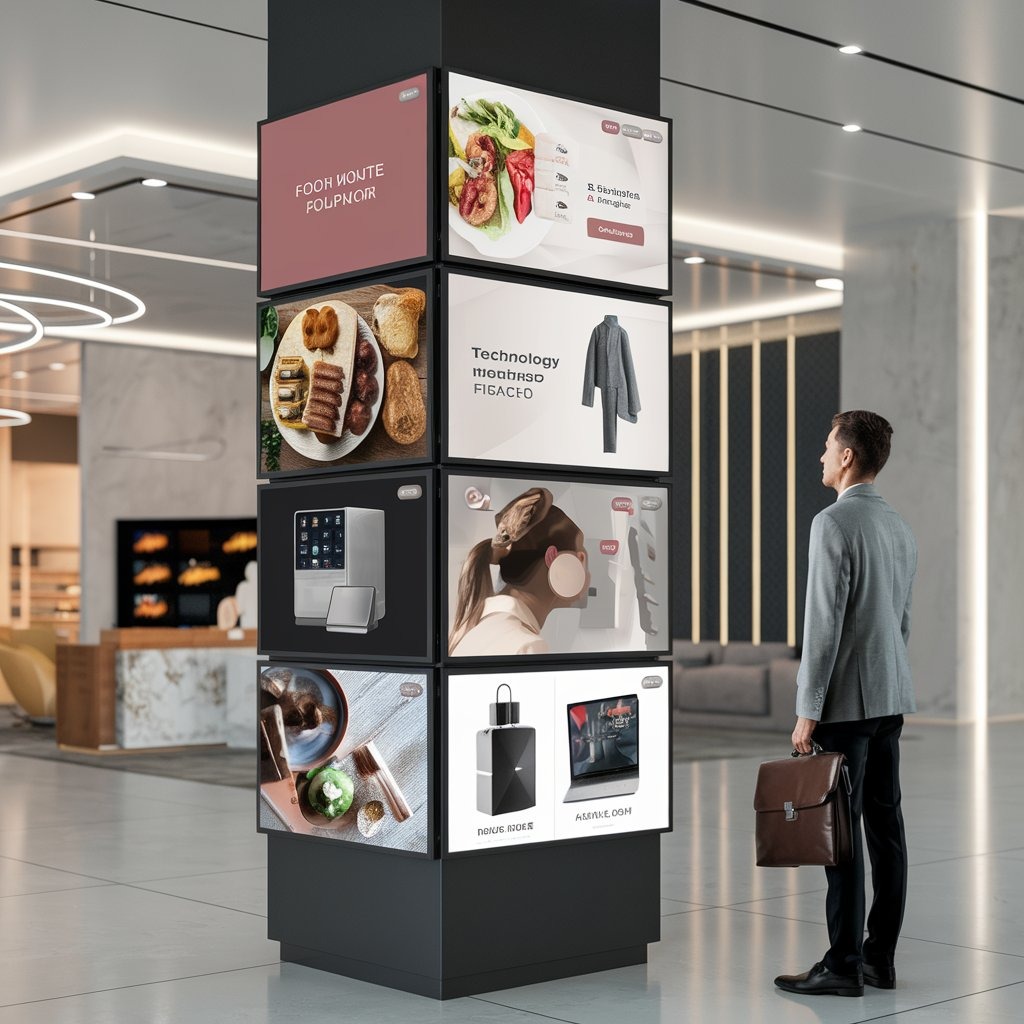In an era dominated by digital media, businesses are continuously looking for innovative methods to engage their audience. One such method that has seen a surge in popularity is vertical digital signage. Unlike the traditional horizontal displays, vertical digital signage offers a fresh, contemporary approach to content presentation. These tall, sleek screens capture attention in ways that other formats can’t. When utilized effectively, vertical digital signage can not only increase engagement but also improve brand awareness and elevate customer experiences.
What Makes Vertical Digital Signage Stand Out?
Vertical digital signage differentiates itself by aligning with how people typically consume content on their smartphones, which are mostly held vertically. This familiar layout creates a more intuitive viewing experience for audiences. Additionally, the vertical format is ideal for showcasing content in spaces where a horizontal display would be too wide or out of place.
From retail shops to airports, restaurants to corporate offices, vertical digital signage is transforming how information is delivered. It’s more than just a visually appealing tool; it’s a functional solution that adds value in a variety of settings.
When considering digital signage price, businesses should weigh the investment against the potential long-term benefits. Costs may differ depending on the screen size, display resolution, and customization options, but the return on investment (ROI) is typically worth it. Features such as remote content updates, real-time data integration, and savings on printing costs make vertical digital signage a cost-effective choice in the long run.
The Importance of Content for Engaging Audiences
The real power of vertical digital signage lies in the content displayed. Installing a screen alone isn’t enough to boost engagement—the content must be compelling, relevant, and optimized for the vertical format. Whether promoting new products in a store, providing directional signs in a hotel, or sharing important updates in a corporate setting, the message must be clear and visually appealing.
Content strategies for vertical digital signage should maximize the unique layout by using vertically aligned visuals such as portrait images, tall infographics, and videos designed for vertical displays. This ensures that the content is well-suited to the screen, enhancing its impact on viewers. Regularly refreshing the content keeps it dynamic and interesting, encouraging viewers to stay engaged.
Adding interactive elements like touch capabilities or QR codes can make the experience even more engaging. In retail, for example, customers can scan QR codes displayed on vertical screens to access additional product information, reviews, or promotional offers. This creates a more personalized and interactive experience, which can drive customer engagement and increase sales.
Strategic Placement for Maximum Visibility
Proper placement is key to the success of vertical digital signage. To make the most impact, businesses should position these displays in areas where they will be seen by high volumes of foot traffic. Beyond foot traffic, it’s essential to consider the audience’s natural line of sight. Vertical signage placed at or slightly above eye level is more likely to catch people’s attention.
In retail, placing vertical displays near entrances or checkout areas can influence last-minute purchasing decisions. In airports, malls, or other public spaces, vertical screens are effective for wayfinding and delivering real-time information, such as directions, maps, or safety alerts. The tall, slim format allows vertical signage to fit into areas where traditional horizontal screens might be too large or intrusive.
Moreover, vertical signage can be integrated into a building’s architecture, serving as both a design element and a functional communication tool. Whether it’s a sleek, wall-mounted display or a towering digital billboard, vertical signage enhances both the environment and the communication of important information.
Utilizing Data to Personalize the Experience
One of the major advantages of digital signage, especially vertical displays, is the ability to personalize content using data. By leveraging software that analyzes data such as audience demographics, location, and time of day, businesses can tailor content to better meet the needs of their viewers. For instance, a café might use vertical signage to promote breakfast specials in the morning and lunch deals later in the day, creating a customized experience based on the time of day.
Additionally, vertical digital signage can integrate live data feeds such as weather updates, social media streams, or breaking news to keep content fresh and relevant. Using audience measurement tools or facial recognition technology, these displays can adapt content based on the viewers’ profiles in real-time, enhancing relevance and engagement.
The Future of Vertical Digital Signage
As technology continues to develop, the potential applications for vertical digital signage are set to expand. Innovations like augmented reality (AR) and artificial intelligence (AI) are expected to play a bigger role in creating more interactive and engaging experiences. Imagine a vertical screen that allows customers in a store to virtually try on clothing through AR or a restaurant that uses AI to recommend dishes based on a customer’s previous orders.
Cloud-based management systems will also become increasingly important for digital signage. These systems allow businesses to remotely control the content displayed on their screens, making it easy to update messages in real-time to reflect new promotions, trends, or events.
Conclusion
Vertical digital signage offers a dynamic, strategic way to enhance audience interaction and deliver visually impactful messages. By focusing on the placement, content, and personalization of vertical displays, businesses can create an engaging and memorable experience for their customers. As digital technology continues to evolve, vertical signage will remain a vital component of modern communication strategies, helping businesses connect with their audiences in new and meaningful ways.
